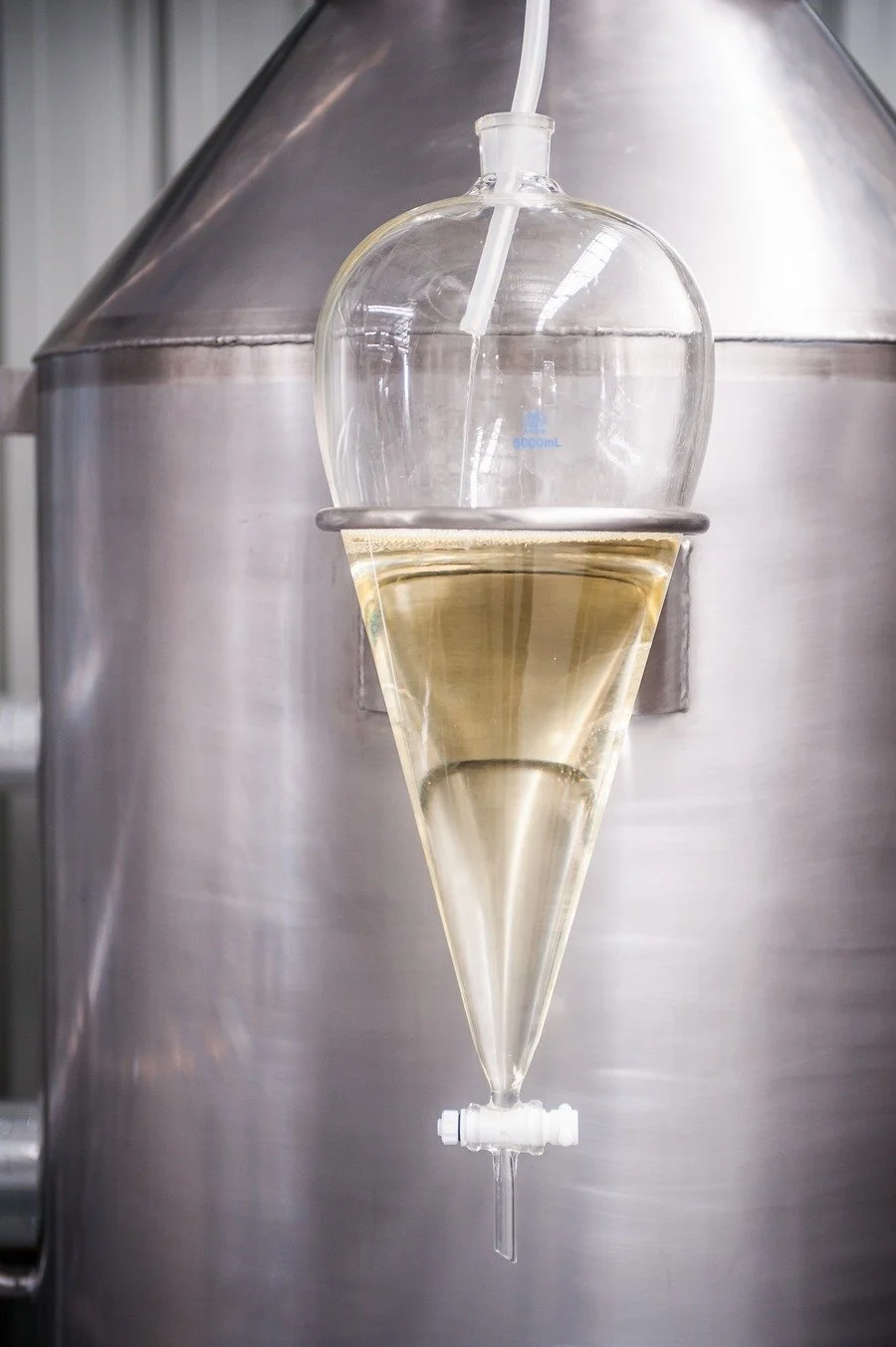Australian Sandalwood Oil’s Unique Perfumery Benefits
In the second of our Perfumers’ Notes series, our in-house perfumers Guy Vincent and Dan Yeo explore feedback, questions and comments we’ve received on the distinct olfactive dimensions of Australian sandalwood oil (Santalum spicatum), and how you can use these to gain an edge in your next formula.
13 million years ago, in the vast lands now known as Australia, Santalum spicatum was born. Few realise it, but Australian sandalwood is the oldest living species of fragrant sandalwood. It is known by Martu and Wongi Custodians as ‘Dutjahn’, and it is through their stewardship and traditional knowledge that we can ethically cultivate and procure this exceptional material.
In the early 2000’s when the oil burst onto the fragrance scene, it was dismissed by many perfumers as harsh and medicinal. Since then, extraordinary gains have been made through improved distillation methodologies, and knowledge and access to provenance – redefining Australian sandalwood oil.
Our in-house perfumers Guy Vincent and Dan Yeo have spent countless hours overseeing olfactive quality, creating bespoke blends and testing these oils in formula to ensure they meet the exacting standards of perfumery. In the second of our Perfumers’ Notes series, they explore feedback, questions and comments we’ve received on the distinct olfactive dimensions of Australian sandalwood oil (Santalum spicatum), and share insights into how you can use these to gain an edge in your next formula.
“It is challenging to work with due to its complex profile”
Santalum Spicatum’s complex profile is especially evident in our wild-harvested qualities that are sustainably and ethically sourced.
Australian sandalwood oil (Santalum spicatum) varies significantly by provenance. The oils’ olfactive profile ranges from the straight up woody, to floral-muguet, to spicy, and even fruity like cassis. When smelled on its own, some oil variants (not all!) can display strength, diffusion and power that can be perceived as harsh as compared to other varieties of sandalwood oil.
“...this complexity is especially beneficial in consumer fragrance formulas, creating a fuller character and faster presentation in quite low doses.”
As noted above, in formulation this so called ‘harshness’ is the reason why it can be used at such low doses in commercial formulas. In our conversations with fellow fragrance experts, we have found that this complexity is especially beneficial in consumer fragrance formulas like air care room sprays, candles, shampoos, moisturisers and body washes, creating a fuller character and faster presentation in quite low doses. Explore its use in your next air care formula, even as low as 0.01%.
Some brands have decided to go a step further, like St Rose out of Sydney Australia, which use Australian Sandalwood (Santalum spicatum) as the key olfactive signature of their brand, using it in every single one of their fragrances.
“It brings naturality”
This is actually a follow-on from out last point, but something so key that we believe it deserves consideration on its own. From our conversations with other leaders in the fragrance industry, we have learned that Australian sandalwood (Santalum spicatum) is unparalleled in the variety of formulas it is used in, due to the naturalizing effect it has on otherwise synthetic smelling accords. It is a unique quality of Australian Sandalwood that is not as shared with other varieties due to its complex character, strength and diffusion.
“Is it creamy?”
Yes, but its milk note is more fresh milk rather than butter, which is associated with Indian Sandalwood (Santalum album). This can help to freshen up coconut accords, or any other sandalwood accords you may have.
In Sandalo by Lorenzo Firenze, the fresh buttermilk smell of Australian Sandalwood is blended with an ambery base and a bitter citrus opening to create a sandalwood effect intended to replicate the effect of Mysore sandalwood.
“It is green and fresh”
One of the interesting things about Santalum Spicatum’s woody profile is the green violet leaf top note it has in common with New Caledonian Sandalwood oil (Santalum Austrocaledonium). We find this quality of violet leaf most pronounced in our plantation qualities, which we can emphasise or reduce in finished oil blends according to the market’s needs.
This violet note is something that is very on trend with Aerin’s Cedar and Violet and Bal d’Afrique by Byredo – although these are more cedar focused, it creates an exciting opportunity for the sandalwood note and violet to be explored (as it was by Frank Voelkl in Santal 33 by Le Labo).
Freshness, and what is considered fresh, is a continual and never-ending race undertaken by perfumers, who are constantly reimagining this experience through new accords or captive molecules.
We see that more and more perfumers are turning to Australian Sandalwood, with its floral-muguet top notes to create an anchor for their fresh creations. For sandalwood perfumes with a fresher presentation, try Colonia Sandalo Concentrée Acqua di Parma or Nude by Rihanna, or even a classic cologne like Eau Sauvage by Dior.
“It is woody”
The primary function of a wood note, as obvious as it sounds, is whether it smells like wood.
Wood notes in perfumery are useful to increase longevity, warmth, naturalness and depth.
Perfumers have long known this and have used these properties to fix other more ethereal materials, such as in the creation of attars, or in its use in incense formulations, where Sandalwood powder is used both as a combustible material and as a fragrant note to anchor other such spices and resins like frankincense, cinnamon, clove and ginger lily root.
In fine fragrance, wood can be paired with flowers and spices to create floral-amber fragrances such as Olympea by Paco Rabanne or watery fougere notes to create fragrances like Pour Homme by Kenzo or L’Homme by YSL.
“It is spicy”
“In the newly christened Amber (before titled Oriental) category, spice blends are an invaluable tool”
It has a strong spice related to clove, ginger, tumeric, while Indian sandalwood (Santalum album) has a much lower spice profile.
In the newly christened Amber (before titled Oriental) category, spice blends are an invaluable tool in in giving fragrances mid and top notes character. In Tom Ford’s Oud Wood, perfumer Richard Herpin blends Sichuan pepper and cardamom with wood notes like vetiver, agarwood and sandalwood to create a modern spicy wood note.
“It is lower in santalol-content, and therefore inferior.”
While the Santalol isomers are widely accepted as the primary odorants of the sandalwood (Santalum) species, more recent thinking highlights the importance of other constituents and lighter fractions in delivering the sandalwood character. This is supported by the enduring popularity of sandalwood despite the availability of singular Santalol molecules and synthetic Santalol analogues.
Not only does Australian sandalwood have Santalols, it has a broad suite of other constituents that add to its complexity and aroma. While it retains the archetypal woody-spicy-creamy notes of sandalwood, it skews to a dryer, more spicy ambery character, well suited to contemporary creation, and natural perfumery where it adds vibrancy and lift.
Creating an Australian sandalwood Accord
We’ve talked about many different ways we can use Australian Sandalwood in your up-and-coming creations. In our last article, we created a muguet accord with a small touch of S.spicatum, to evaluate and see the difference. Today we will take a different approach and create a sandalwood accord that can be added to any formulation, in as high or low proportions as you would like.
Australian sandalwood (Santalum spicatum) oil’s lovely, fresher presentation is juxtaposed against other creamy sandalwood molecules and lactones to create an Australian Sandalwood accord that can be used in any formulations.
Make it stand out
This is just a drop in the ocean of the possibilities this extraordinary material offers.
We welcome you to join us on this journey of exploration, and hope that you benefit from the beauty of ‘Dutjahn’, Australian sandalwood.







